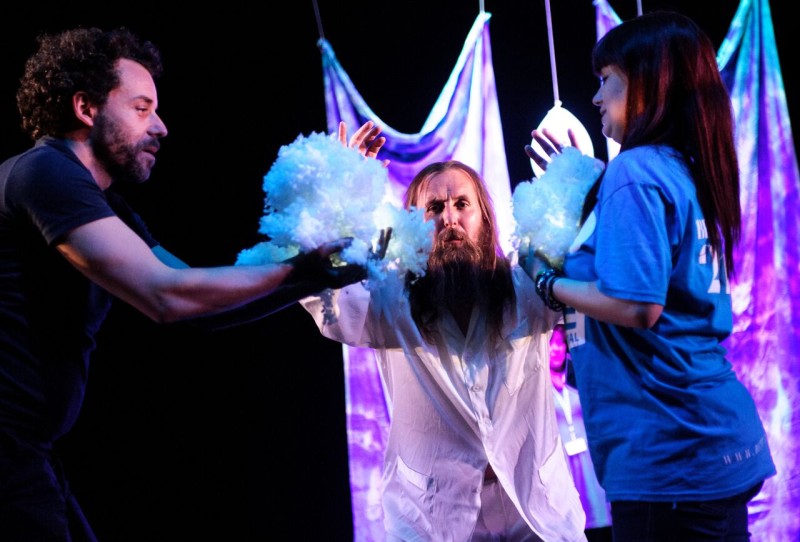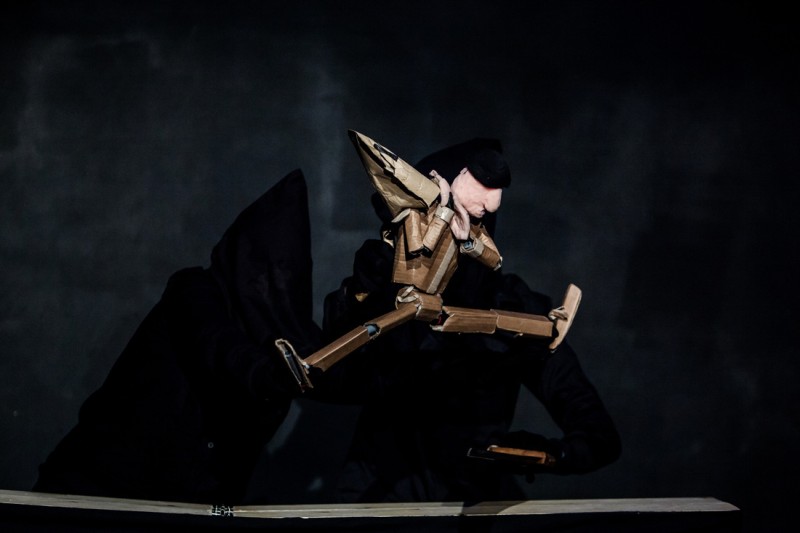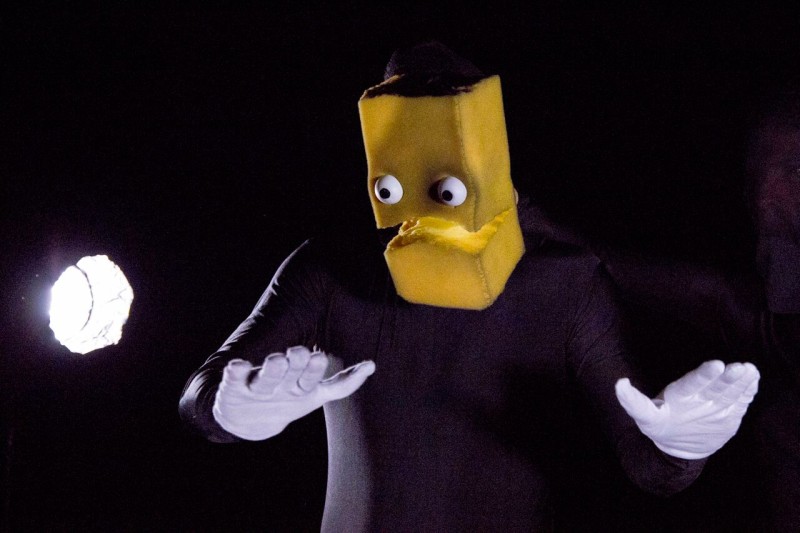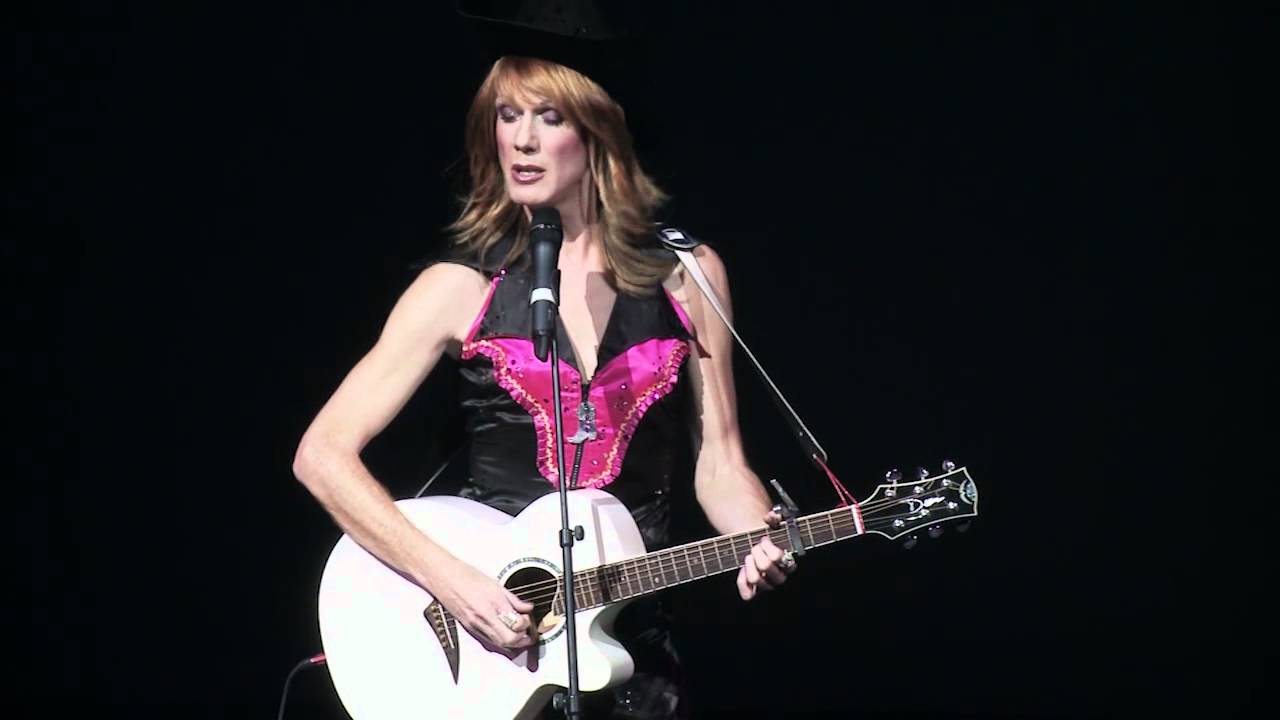 Jamie Wood’s comedic tribute to the work of Yoko Ono re-enacts a series of her most famous ‘pieces’, interspersed with his reflections on romantic love expressed through his own odd, poetic happenings. From the outset he exudes an air of playful generosity, staring deeply into one person’s eyes and telling them, ‘I love how thoughtful you are,’ and another, ‘I love the pattern on your shirt.’ It’s a kind of live art clown show, referencing avant garde art history while remaining highly accessible, and his warmth and silliness win the audience over into participating in all manner of eccentric ‘actions’.
Jamie Wood’s comedic tribute to the work of Yoko Ono re-enacts a series of her most famous ‘pieces’, interspersed with his reflections on romantic love expressed through his own odd, poetic happenings. From the outset he exudes an air of playful generosity, staring deeply into one person’s eyes and telling them, ‘I love how thoughtful you are,’ and another, ‘I love the pattern on your shirt.’ It’s a kind of live art clown show, referencing avant garde art history while remaining highly accessible, and his warmth and silliness win the audience over into participating in all manner of eccentric ‘actions’.
A miniature field of woolly sheep coalesce into two clouds, which volunteers ‘puppeteer’ as approaching lovers, while another runs excitedly around with a gym ball representing the sun. He sprays a mist of water beneath the clouds, then shines a torch on a cd of John and Yoko’s last album together, which reflects the multiple colours of the rainbow onto the backdrop. The poetic inventiveness of the scene induces audible ‘Ah!’s from the audience and has them beaming in appreciation.
Early on he reads out a manifesto for the creation of O No! including the dedication to ‘challenge the boundary between Art and Life’, and that there should be ‘no cynicism’. From the tie-dye backdrop to his mystical incantations and playful dancing, a clear tint of spoofing runs throughout, but his beard is real and so, apparently, is his desire for us all to love each other more. This ambiguous play between sincerity and silliness ensures the show is consistently engaging. ‘Are you allowing yourself to be touched by art?’ he asks in a tone that planted a giggle inside me that just kept growing.
Given the amount of interaction, every performance is bound to be different, making this palpably a live experience in which he asks the audience to take the risk of trusting him. On this occasion it included a quite beautiful conversation about love, with a volunteer, conducted from inside a very large bag. In another moment we all hold hands then very slowly let go, noticing the last moment of contact; the humour of his delivery enables us to actually contemplate the poignancy of the experience. At the end there is a delightful John Cage-inspired orchestral recital featuring many volunteers playing various sound-making objects, and we leave warmed by the communal experience.
Overall, it’s a poetic collage that provides a touching celebration of the endeavour to nurture loving relationships, laced through with a playful humour; perfect as an oasis in the midst of a hectic festival, and a genuinely different experience.









